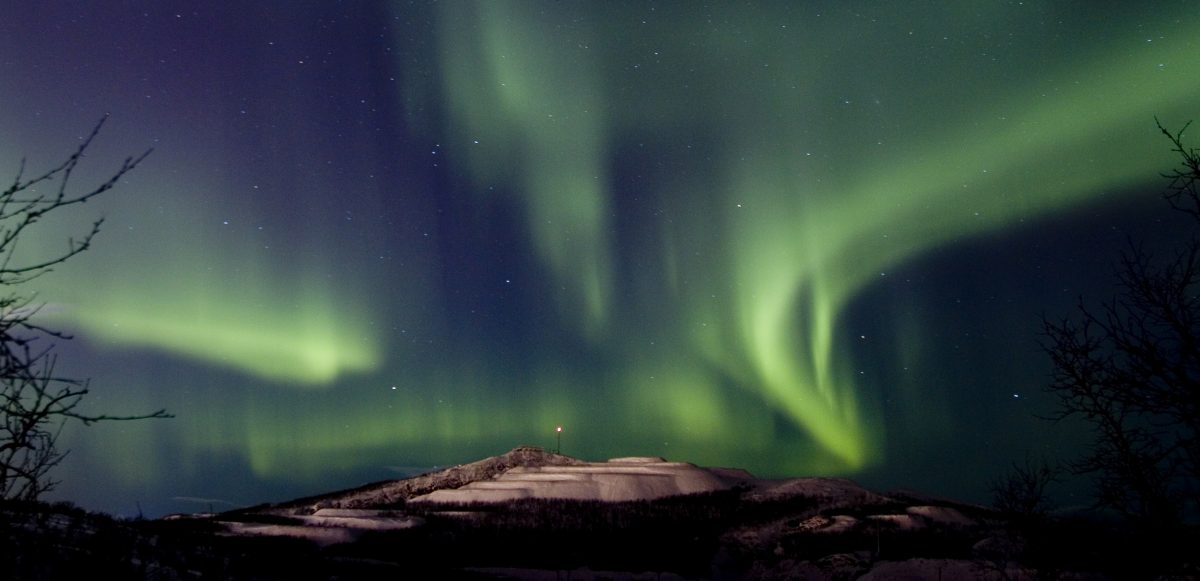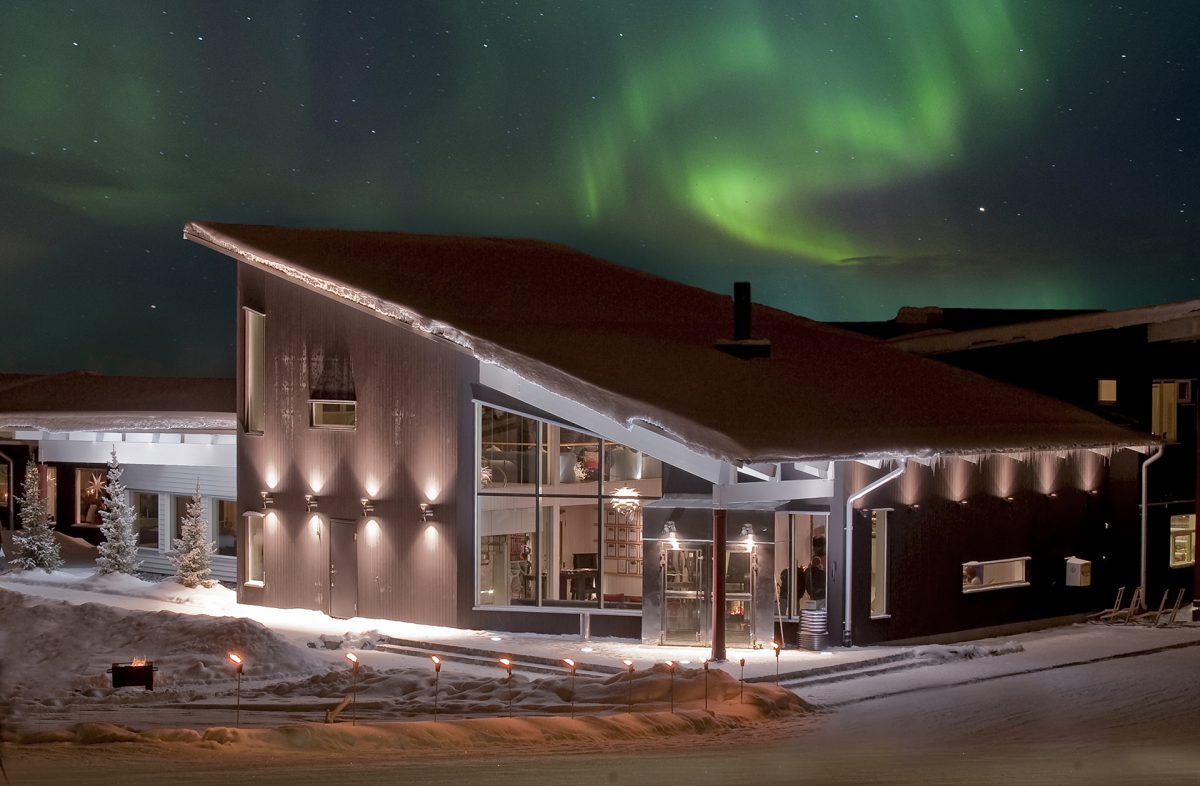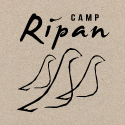Northern lights in Kiruna
In Kiruna you can view the northern lights from the end of August to April. Here at Camp Ripan you really do not need to step further then outside your own cabin to see the magnificent natural phenomena, we even have custom made street lights with down angled lamp shades so you can see the northern lights clearer looking at the sky.
If you want more adventures we highly recommend joining one of our northern lights tours, the first ones starts as early as September 1st. Whether you choose to do a Northern light tour autumn or Northern light tour winter has no significant meaning for the northern lights itself. The lights will dance and sparkle just as beautiful both seasons! The advantage in autumn is that you do not need to dress as much as in Winter, on the other hand the advantage in the winter time is that you can view the lights earlier as it gets dark sooner.

General About the Northern Lights
In the Arctic (North Pole) you can see the northern lights. In the Antarctic (South Pole) you can see the southern lights. Common name for northern and southern lights is Aurora. Aurora are there all the time, day and night, year round. On satellite images you can clearly see the Aurora as enduring rings of light encircling the Arctic and Antarctic. These rings are called the northern and southern auroral ovals respectively. They vary in intensity and size, but never disappear. Their centers rest around the magnetic poles. The Latin name for Northern lights is Aurora Borealis. In antique Roman mythology, Aurora was the goddess of dawn and borealis is Greek for the North wind. In English, Aurora Borealis then translates into ”the dawn of the North”. The Latin name for the Southern lights is Aurora Autralis.
When/Where is the Best to See the Northern Lights?
In Sweden, Norrbotten offers the best chance to see the northern lights. And Kiruna is one of the best places in Norrbotten.
Northern lights can be seen best from September to April. It has to be dark and relatively clear weather. The best place to be is somewhere out in the open where there is no artificial light. Check the sky often, the most intense part of an auroral display usually only lasts a little less than ten minutes. If you are unsure whether you are looking at a weak aurora or a cloud, you can determine this by simply looking for stars. Stars can be seen through the aurora whereas not through a cloud. In addition, auroras are slightly greenish and change their form in a completely different way than clouds do.
Forms of the Northern Lights
There are many forms, which depend on the different processes going on in space (solar activity). Early in the evening, the most common form looks like a bow of light crossing the sky from east to west. Sometimes the bow becomes more active and forms something more like a drapery. An auroral bow can be up to 1000 km long, while its width can be as little as 100 meters. If you are standing directly under an aurora in the direction of the magnetic field, you can see the auroral beams coming from a single point and spreading out in all directions – this is a Corona. Those who are observing the same aurora a little further North or South see it instead as a bow.
During the most colorful northern lights displays, those resulting from a so-called substorm (a disturbance in the magnetic field, originally caused by the solar wind), the entire sky can be filled with the most incredible auroral forms and colors. When the greater part of this energy is depleted, usually after midnight, you can see weak patches of light appear and fade, back and forth, independent of each other and at different paces. This is a Pulsating Aurora.
Colors of the Northern Lights
Green, red, violet and blue. The closest you get to yellow is the yellow-green colour, which is the strongest color in an Aurora. The different colors depend on which atoms in the atmosphere are being hit, mostly oxygen and nitrogen, as well as the speed and charge of the racing energy-rich particles.
What Causes the Northern Lights?
Earth is encased in a thin envelope of gas, the atmosphere. In outer space beyond our atmosphere there is the constant movement of fast-moving charged particles (often so small it can float freely). These particles need energy to be able to move about, energy they get from the sun. The particles move at great speed thanks to the energy they get from the solar wind. When the particles speed about in the universe, some of them are caught in Earth’s magnetic field and are thus directed towards the poles.
When the particles come into Earth’s atmosphere they collide with the atoms (the smallest part, building block, of a substance) and molecules (a group of atoms bound to each other) that the atmosphere consists of. When they collide, the atoms absorb some of the kinetic (motive) energy. The atoms become excited and emit the excess energy as light – the northern lights. The most intense northern lights occur at an altitude of about 100 km up in the atmosphere and can stretch hundreds of kilometers out into space, at the most up to 1000 km.
Do the Northern Lights Make any Noise?
This is something scientists debate on. Many people say they have heard sounds during particularly strong Northern lights, either a crackling sound like from a fire or some sort of whizzing sound. But what makes some scientists doubt this is that those who say they have heard sounds say this occurred at the same time the northern lights had their absolute strongest activity. But since the sound is from sound waves that travel slower than the light, the sound cannot be heard at the same time as when the auroras are their strongest. The Northern lights occur at about 100 km up in the atmosphere, and it would take close to five minutes for the sound to reach the observer from the time they see the flashing Northern lights.
What did People Used to Think?
A common belief among many of the indigenous peoples of Europe, Asia and North America was that the Auroras were a place where the dead set up their camps. Not all the dead, only those who had died a violent death or met an early demise such as small children, women in childbirth, those fallen in battles, murdered or having committed suicide.
The Sámi thought the northern lights were in some way connected to the weather. If the Aurora flashes were high in the sky, warmer weather could be expected. But this belief was not shared by all people, some thought instead that it was going to be colder or a snowstorm could be expected. Nonetheless, most of the indigenous peoples had in common the belief that the flashes of the northern lights meant you could expect a change of weather.
Another belief shared by those living in the Auroral zone, among them the Sámi and Native Americans, was that the auroras were to be respected. Children were told to be well-behaved when the Northern lights flashed in the sky, making mischief was not advisable during the Auroral display. Respect for the Northern lights was so great for some people that they would keep their children indoors during an Auroral display in fear that otherwise the children could be killed by the light phenomenon. But on the other hand, there were those who thought it was not the least bit dangerous as long as the children wore hats, for then at least they would not risk having their hair scorched off.
-

Northern lights at Camp Ripan. Photo: Jonas Sundberg


